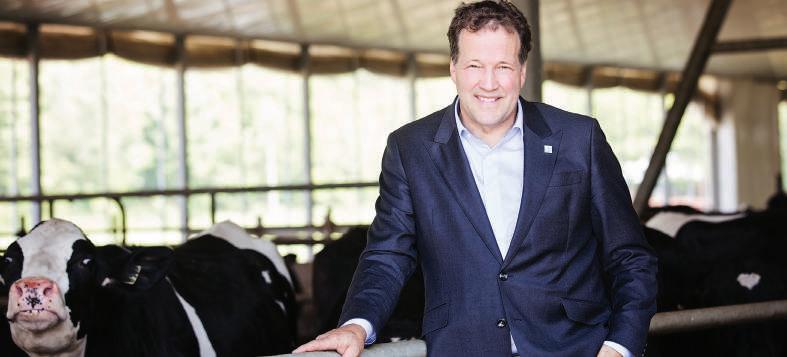COVER STORY
A YEAR
Reflecting on the impact o
from farm to processing to J.P. GERVAIS LEAD ECONOMIST AT FARM CREDIT CANADA By Treena Hein
CONTRIBUTOR
A
While Canada’s dairy sector had a challenging time adjusting in the first stage of the crisis, demand for dairy products was overall higher than normal last year. —J. P. Gervais
20
JANUARY 2021 | MILKPRODUCER
t the start of the pandemic, no one in Canada’s dairy sector could tell how 2020 would play out. However, at this point, J.P. Gervais, lead economist at Farm Credit Canada, says while Canada’s dairy sector had a challenging time adjusting in the first stage of the crisis, demand for dairy products was overall higher than normal last year. He says strong demand was apparent not long after the pandemic was declared and did not change as 2020 progressed. “As people were confined to their homes in March and fear about food availability led to some hoarding, there was a major overall increase in dairy consumption,” Gervais notes. “Shipments were up 33 per cent that month compared with 2019. April was also like 2019. But at the same time, demand for products used in food service and high-end restaurants, such as cream, dropped substantially. We don’t have precise numbers relating to dairy consumption from food service, but we know demand dropped.” At the processing level in 2020, Gervais has data going as far as September showing an overall rise of 16 per cent in dairy product sales, especially in butter and cheese. This was due to the large number of people cooking and baking at home, as well as having their coffee and tea at home, where many people were also working. Specifically about butter, while Gervais notes the national inventory of this product is always fluctuating, butter stocks
were declining heading into December 2020, likely due to more home baking across the nation. Gervais says it’s always good news for dairy farmers when butter and cheese is consumed at higher rates because of the fat content—fat is worth the most to producers. But the market for solids non-fat remains a challenge—extra challenging this year compared with the significant challenge to sell this product over the last four to five years. “I think another factor in the overall use of dairy products, especially cheese and yogurt, is the price of dairy protein remained affordable— it did not increase as much—compared with the prices of other proteins, such as pork and beef in the summer,” Gervais says. “Even the price of eggs increased more than dairy products.”
COMPARING Dr. Torsten Hemme, managing director of the IFCN Dairy Research Centre, noted at the 21st International Farm Comparison Network Dairy Conference held online in June 2020, the two countries that could be considered as the “epicentre of the dairy crisis” at that point were the United States and India, with large drops in milk price occurring. Compared with Canada, the situation was more dire for U.S. dairy processors. Many of them shut down due to the closing of schools, restaurants and hotels, notes WWW.MILKPRODUCER.CA




